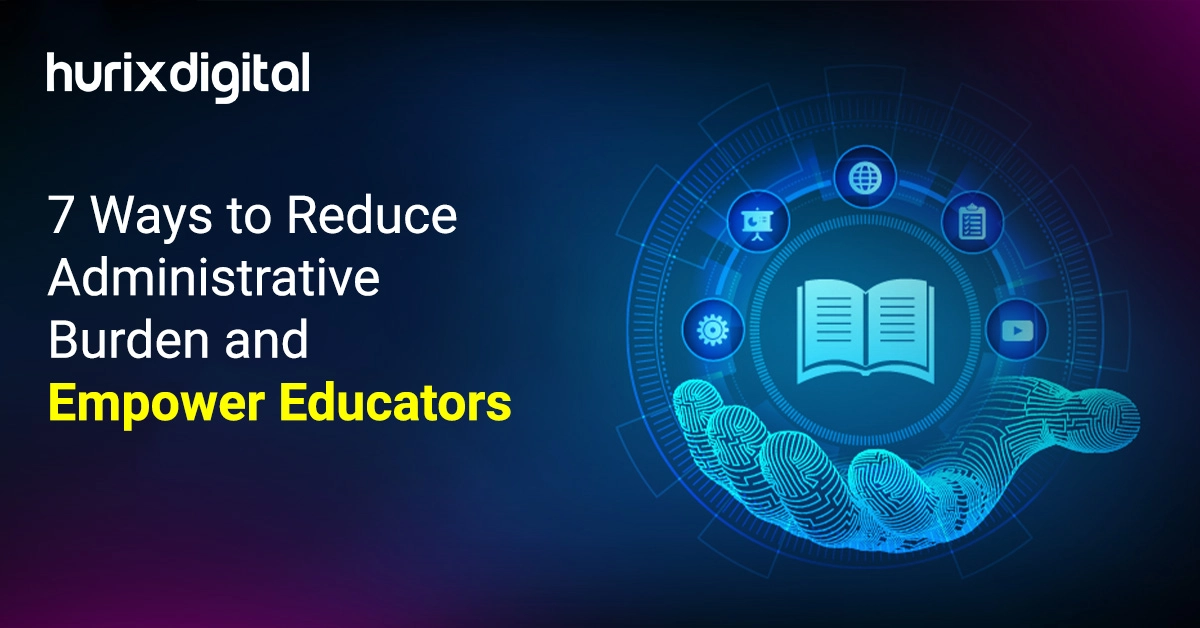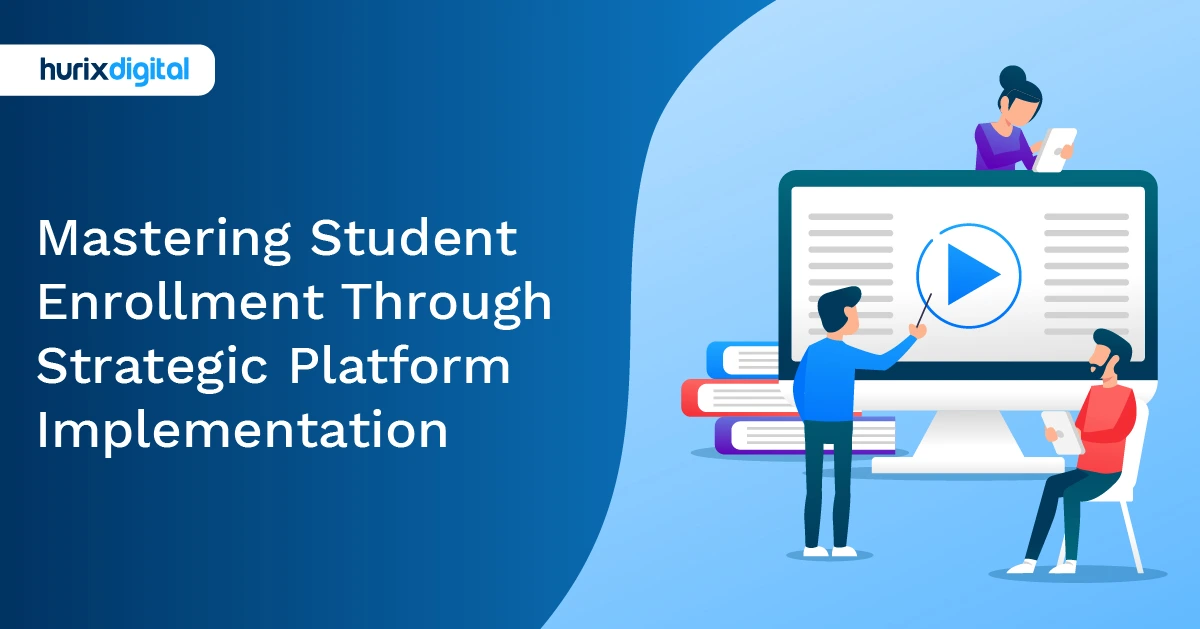
7 Ways to Reduce Administrative Burden and Empower Educators
Summarize with:
University presidents in higher learning institutions work in a dynamic setting and are faced with numerous challenges. None is as emergent as the administration’s pressure on teachers. This issue can be observed at the institutional level and has massive implications regarding the quality of education and the conditions of teachers.
The Merrimack College Teacher Survey 2023 revealed that more than half of educators would not recommend teaching as a profession to their younger selves, illustrating the problem’s severity. As depicted by this survey, various educators are burdened with several non-teaching activities that require an unusually large amount of time and energy.
In this blog, we will cover seven approaches to minimize this pressure and help educators, with an emphasis on utilizing EdTech solutions to enhance the learning process and make teachers’ work less stressful.
Table of Contents:
- Understanding the Administrative Burden
- 7 Ways to Reduce Administrative Burden and Empower Educators
- Wrapping Up
Understanding the Administrative Burden
Before jumping straight to solutions, it is imperative to understand how much of a problem the administrative load placed on educators is.
The RAND survey indicated that 59% of teachers had frequent job-related stress, which is approximately double the general working adult average of 33%. This stress often stems from non-teaching duties like report preparation, record-keeping, and organizational tasks. Addressing this burden is the first step in effectively implementing EdTech and educational management solutions.
Also Read: Holistic Approaches to a Student-Centered Approach and Equity in Higher Education
7 Ways to Reduce Administrative Burden and Empower Educators
Empowering educators is vital for improving the overall educational experience.
Here are seven ways you can reduce the administrative burden and enable teachers to focus on their core responsibilities:
1. Implement User-Friendly Educational Technology
Among all the technologies that can help decrease the load on administration, user-friendly EdTech solutions are one of the most effective.
These tools have the capability of helping in executing routine tasks, hence allowing educators to engage in teaching and other tasks relating to students. Here’s how you can leverage technology:
- Employ the use of Learning Management Systems (LMS) in order to centralize lesson planning as well as resource sharing.
- Implement automated grading systems to streamline assessment processes.
- Use cloud-based systems for the availability of learning resources and collaborative work.
By leveraging these teacher productivity tools, teachers will spend a lot of time in the classroom instead of the office. For instance, research shows that 70% of the grading time is cut through the use of automated grading systems, thus freeing the teacher to spend more time on the learners and, in general, teaching.
2. Streamline Documentation and Reporting Processes
Excessive documentation and reporting frustrate teachers and can play a big role in causing teacher burnout. Thus, by streamlining such processes, you can remove one of the most significant sources of stress for educators.
- Implement digital record-keeping systems to reduce paperwork.
- Standardize reporting templates to minimize redundancy.
- Use data analytics tools to automate report generation.
EdTech solutions can be of great help in this respect. For instance, digital record-keeping systems reduce time spent on documentation and allow educators to spend more time on instructional planning and interacting with students.
3. Provide Comprehensive Training and Support
To maximize yield from EdTech solutions and new administrative processes, it’s essential to provide comprehensive training and ongoing support to educators. Here’s what you can do:
- Hold regular professional development sessions on new technologies and processes.
- Provide access to online resources and tutorials for self-paced learning.
- Establish a mentorship program to support new teachers in navigating administrative tasks.
Training and support are two factors that should be incorporated in any organization that wishes to achieve the best results from classroom management solutions. Proper training on the new technologies available helps teachers adopt them in the classroom.
4. Optimize Communication Channels
Effective communication is crucial for streamlining school administration. By optimizing communication channels, you can reduce confusion and redundancy in administrative tasks. Here’s how to improve communication:
- Set up a centralized communication platform for staff, students, and parents.
- Establish clear guidelines for communication protocols and expectations.
- Utilize automated notification systems for conveying routine updates and reminders.
Efficient communication systems can minimize administrative time spent on coordination, thereby providing more time for educational activities.
5. Delegate Non-Teaching Responsibilities
To allow educators to focus on their core responsibilities, consider delegating non-teaching tasks to support staff or specialized personnel. Here are some ways to delegate tasks effectively:
- Assign administrative assistants to handle paperwork and data entry.
- Utilize technology support staff to manage IT-related issues.
- Employ dedicated personnel for student support services and counseling.
This approach to teacher empowerment techniques can significantly reduce the administrative load on educators.
6. Prioritize Teacher Well-Being
Easing administrative tasks is directly connected with focusing on the teacher’s welfare. Schools should have policies and programs that support educators’ mental and physical health. Consider these initiatives:
- Offer flexible working arrangements when possible.
- Provide access to mental health resources and counseling services.
- Implement wellness programs that promote work-life balance.
Caring for the teachers’ welfare is good for them and is also correlated with the student’s achievement.
7. Advocate for Systemic Changes
Finally, policy changes that effectively tackle the causes of administrative burden in education must be promoted.
Here’s how you can push for systemic improvements:
- Engage with policymakers to simplify reporting requirements.
- Collaborate with educational organizations to develop best practices for administrative efficiency.
- Participate in research studies to define problems affecting administration in education and find ways of solving them.
Advocating for systemic changes can help create more supportive educational environments. Such advocacy may lead to the development of policies that ease administrative hassles for all institutions and, by extension, the education fraternity.
In this regard, university presidents and college administrators play a pivotal role in fostering an environment conducive to effective education and teacher well-being. By implementing these strategies and leveraging EdTech solutions, institutions can alleviate administrative burdens, enhance teaching quality, and support educators in achieving their full potential.
Read EXCLUSIVE Story: Hurix Digital Enhances Accessibility for Over 100,000 Students for a US-Based Community College
Wrapping Up
The reduction of the administrative load is crucial for the strengthening of the educators’ voice and the enhancement of education quality.
By implementing EdTech solutions, streamlining processes, and prioritizing teacher well-being, you can create an environment where educators can focus on what they do best: communicating with and guiding students.
In the complex world of modern education, it is important to use technology, devise new ways to help our educators, and enhance classroom management solutions.
Do you want to reduce administrative burden and empower your educators? Hurix Digital offers comprehensive EdTech solutions designed to streamline school administration and boost teacher productivity.
Contact us today to learn how we can help transform your educational institution!
Summarize with:

Senior Vice President
A Business Development professional with >20 years of experience with strong capability to sell new solutions and develop new markets from scratch. New Market Entry Specialist with experience working in the largest emerging markets. Exceptional experience in conceptualizing, ideating and selling new learning technologies like VR AR, etc. across multiple industry verticals.
 A Space for Thoughtful
A Space for Thoughtful 




